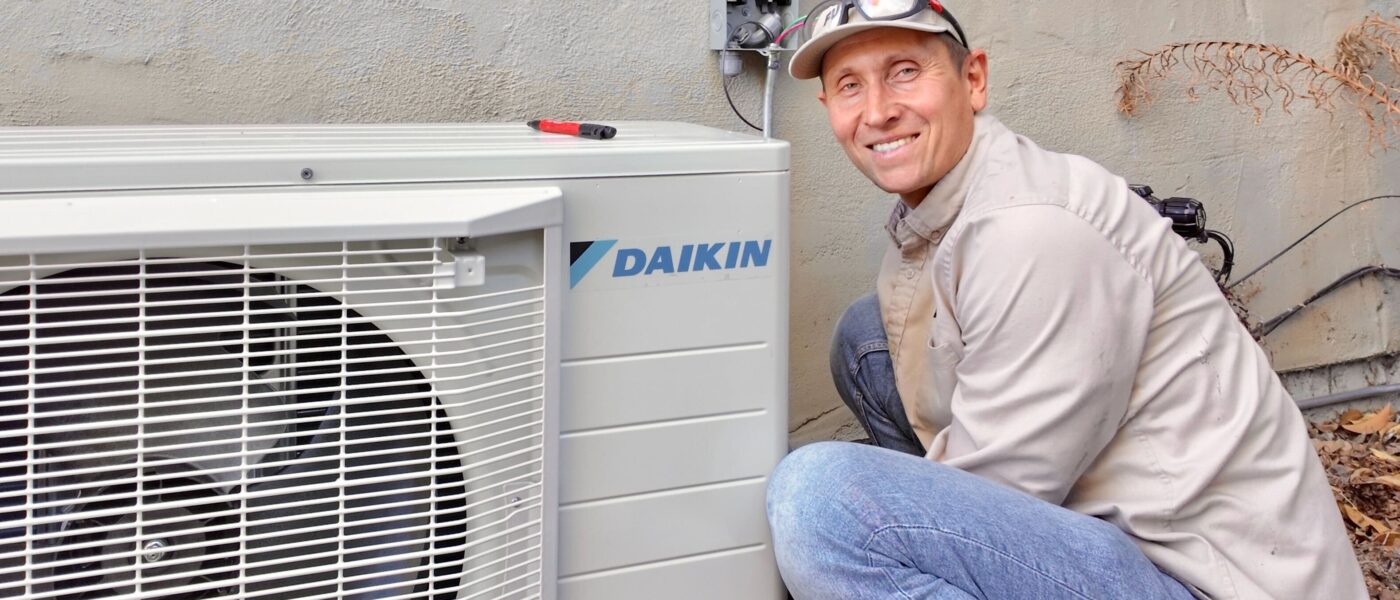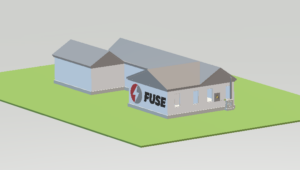The more you look through different HVAC systems, the more often you’ll see ductless mini splits. And no wonder you do! This is a new technology that is becoming more and more popular. You might be curious if there are advantages and disadvantages of mini split systems? This guide is made to help you sort out all your questions about this HVAC system. Discover the disadvantages and advantages of mini split systems by calling us (669) 666-9219 or writing to support@fuseservice.com before making your move!

What Is a Mini Split System?
Basically, a mini split system is another type of ductless HVAC system. It includes one or more indoor units and an outdoor compressor. The main difference is that mini split systems deliver air directly into different zones or rooms, while common HVAC uses air ducts to distribute it. Another great advantage is that each unit operates independently, making them ideal for temperature zoning and personalized comfort.
How Does a Mini Split Work?
Wondering how does a mini split work?
Here’s a simplified breakdown:
- Through refrigerant lines warm air goes from the inside to the outside unit.
- The outdoor unit releases heat outside making air cooler.
- There’s no ductwork—just a small conduit containing refrigerant tubing, power cable, and drainage lines connecting the two units.
This efficient transfer method provides both heating and cooling in a compact, energy-efficient design. Of course this also means that there are several pros and cons of mini splits.
Advantages of Mini Split Systems
Energy Efficiency
The first one of all the advantages of mini split systems is their high energy efficiency. Since there’s no ductwork, energy losses commonly seen in central HVAC systems are avoided.
Easy Installation
Mini splits are easy to install. A small hole a few inches in the wall is often all that’s needed to connect indoor and outdoor units.
Zoned Comfort
Every single indoor unit can be controlled separately, making it easier to tailor temperature in each room. This zoning offers mini split benefits for families with diverse comfort needs.
Quiet Operation
Compared to central systems or window units, mini splits operate very quietly, both indoors and outdoors.
Aesthetically Flexible
Indoor units come in various designs and can be wall-mounted, ceiling-recessed, or floor-standing.

Disadvantages of Mini Split Systems
Higher Upfront Cost
Surely, energy costs will pay off, but at the investment moment you’ll have to pay more than for a traditional system.
Aesthetic Disruption
Though sleek, some people dislike how indoor units look when mounted on walls or ceilings.
Maintenance Complexity
Filters need to be cleaned more often. Also, installation errors can lead to inefficiency.
Limited Cooling Area
Disadvantages of mini split systems often include the fact that they may struggle to cover larger spaces without multiple units.
Pros and Cons of Mini Splits
Here’s a handy comparison to sum up the pros and cons of mini split systems:
| Pros | Cons |
| High energy efficiency | High upfront cost |
| Individual room control | Visible indoor units |
| Quiet performance | Requires regular maintenance |
| Easy, ductless installation | Not ideal for very large homes |
This table helps summarize the mini split advantages as well as the challenges that come with them.
Are Mini Splits Worth It?
So, are mini split systems good investments?
If you:
- Need to heat/cool a home addition
- Want personalized temperature control
- Value energy efficiency
…then yes, they’re absolutely worth it.
However, if you have a large home and dislike the look of wall units, it’s wise to explore other options like traditional AC installation in San Jose.

Fuse Service’s Expertise with Mini Split Systems
Fuse Service is your mini split system expert that will provide top-notch solutions for your home. Our licensed team will examine your home and can advise you on a system that fits your lifestyle. We take into account comfort, aesthetics and efficiency so you have the best solution. Contact us right now for a personalized mini split consultation on benefits of mini splits!
Frequently Asked Questions (FAQs)
What is the major advantage of mini-split air-conditioning systems?
Its zoned temperature control feature and high energy efficiency without ducts.
What are the disadvantages of mini split systems?
Some disadvantages of mini split systems include high upfront cost, maintenance needs, and their limited ability to cool very large areas.
Are mini splits suitable for large homes?
They can be, but multiple indoor units are usually needed, which can increase installation costs and complexity.
Do mini splits require regular maintenance?
Yes. Filters should be cleaned monthly, and professional maintenance is recommended annually.
Can mini splits be used in cold climates?
Absolutely. Many modern mini splits have heat pump functions that work effectively in sub-zero temperatures.






